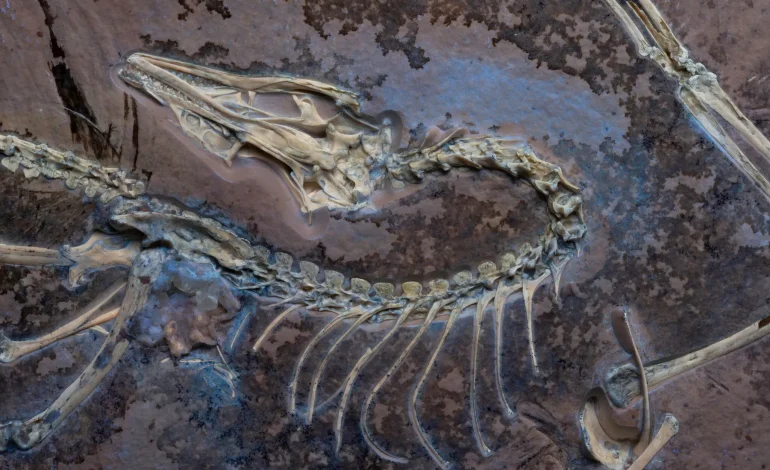A newly studied fossil of Archaeopteryx, one of the most iconic prehistoric creatures, is shedding fresh light on how some dinosaurs may have taken to the skies.
Known as the “Chicago Archaeopteryx,” the specimen offers an unusually well-preserved look at this feathered dinosaur, revealing traits that suggest it may have flown short distances in a manner similar to modern birds like chickens or roadrunners.
Archaeopteryx was first discovered in 1861 in the limestone deposits of Solnhofen, Germany, and has long been recognized as a key transitional fossil between dinosaurs and birds. Its combination of reptilian features—like teeth and a long bony tail—and birdlike feathers made it central to the understanding of avian evolution.
Now, over 160 years later, scientists are still learning from it. The newest findings, published in Nature, come from a remarkably intact specimen acquired by Chicago’s Field Museum in 2022 and made public in 2024. Unlike many previous fossils that were flattened by the fossilization process, this one preserved bones in three dimensions, allowing scientists to examine skeletal features in greater detail than ever before.
“This specimen may be one of the most complete and informative examples of Archaeopteryx we’ve ever seen,” said Dr. Jingmai O’Connor, lead author of the study and a paleontologist at the Field Museum.
Using CT scans and ultraviolet light—techniques unavailable to 19th-century researchers—O’Connor and her team were able to visualize soft tissues and feather arrangements hidden in the stone. One of the most significant findings was the confirmation that Archaeopteryx had not two but three layers of wing feathers, a configuration seen in modern birds that supports short flights by improving aerodynamic lift.
Earlier interpretations of Archaeopteryx’s wings suggested limited flying ability due to features like the absence of a strong breastbone. However, the presence of this third feather layer suggests the dinosaur could manage bursts of flight, likely over short distances, such as to escape predators or reach higher ground.
The fossil also preserved details of the skull and feet. The shape of the palate suggests a transitional phase in skull evolution between non-avian theropods and more modern birds, indicating that some flexibility in the skull—crucial for feeding behaviors—was already developing. The toe pads revealed in the fossil are suited for running rather than grasping, reinforcing the idea that Archaeopteryx was comfortable on the ground.
“It likely lived much like a Jurassic chicken—mostly terrestrial, but capable of flight when needed,” said Dr. O’Connor.
The new data not only refine the understanding of how Archaeopteryx moved but also contribute to broader theories about how flight evolved in birds. The discovery of humeral tertials—feathers attached near the wing’s base—supports the notion that some modern flight features originated earlier than previously believed.
Outside experts say the fossil highlights the continuing importance of new discoveries, even of species long studied.
“This study underscores how much we still have to learn from well-known fossils when new technology or better preservation is involved,” said Dr. Michael Pittman, a paleontologist at the Chinese University of Hong Kong.
For Dr. O’Connor, the Chicago specimen represents not the end but a beginning:
“This fossil is going to keep me busy for years,” she said.
With input from the New York Times and Nature.









The latest news in your social feeds
Subscribe to our social media platforms to stay tuned